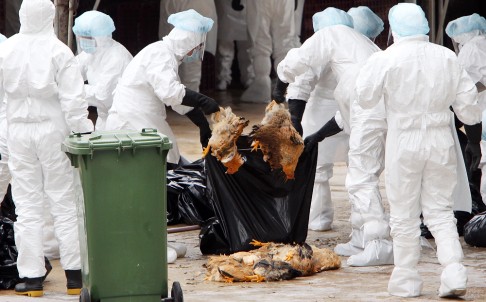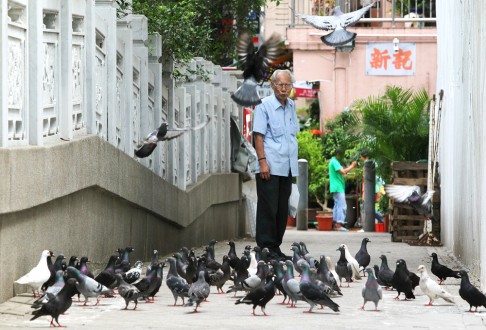Easily spreadable H5N1 flu just five mutations away, study finds
PUBLISHED : Friday, 11 April, 2014, 10:14pm
UPDATED : Friday, 11 April, 2014, 10:15pm
McClatchy-Tribune

Health workers with protective gears have arrived at the Cheung Sha Wan Temporary Wholesale Poultry Market to start culling all chickens there in 2011. Photo: Felix Wong
Dutch researchers have found that the H5N1 bird flu needs only five favourable gene mutations to become transmissible through coughing or sneezing, like regular flu viruses.
Health officials have long feared H5N1 will evolve a knack for airborne transmission, setting off a devastating pandemic.
While the new study suggests the mutations needed are relatively few, it remains unclear whether they are likely to happen outside the laboratory.
"This certainly does not mean that H5N1 is now more likely to cause a pandemic," said Ron Fouchier, a virologist at Erasmus University Medical Centre in Rotterdam and co-author of the study published in the journal Cell. "But it does mean that we should not exclude the possibility that it might happen."
As with many other influenza studies, the scientists used ferrets as the stand-in for humans because their immune system responds similarly to the disease.
By exposing ferrets and human tissue samples to a variety of genetically altered viruses, study authors identified five key gene mutations.
Two of them improved the virus' ability to latch onto cells in the animal's upper respiratory tract.
Once there, it could enter the cell, disgorge its genetic material and cause the cell to mass-produce copies of the virus.

A flock of pigeons resting in Hong Kong. Photo: K.Y. Cheng
"Another mutation increases the stability of the virus," Fouchier said. "The remaining mutations enable the virus to replicate more efficiently."
H5N1 bird flu has killed 60 per cent of the 650 humans known to be infected since it first crossed the species barrier in Hong Kong 17 years ago.
